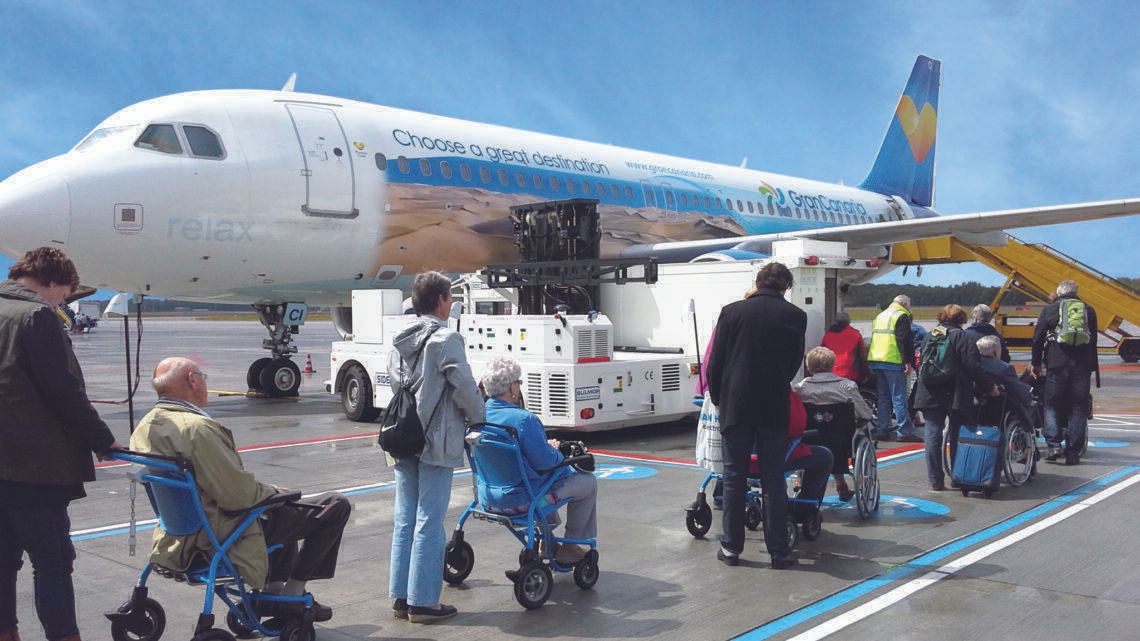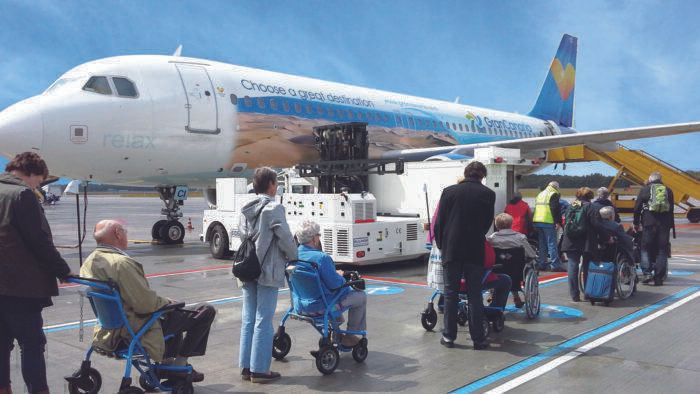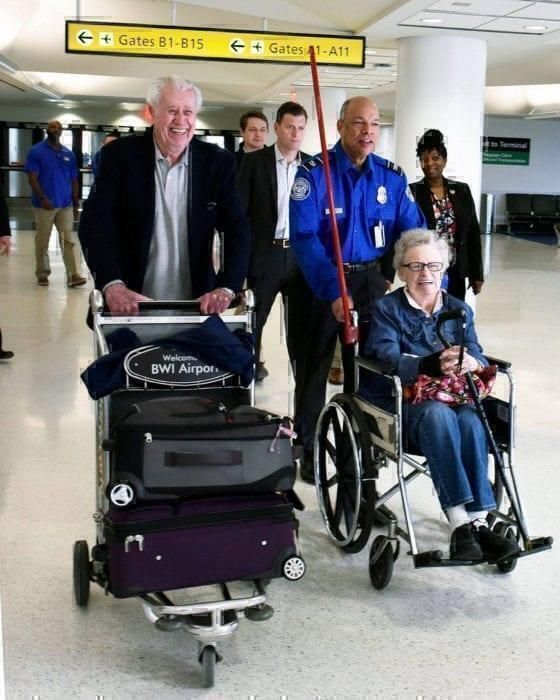Until recently, I had no idea what it’s like to take a flight with a disability or even reduced mobility. In fact, I’ve never had to think of anyone else other than myself when flying.
So when I took an elderly disabled relative who has significantly restricted mobility to The Netherlands on my own, it was a real eye-opener. This wasn’t just in a practical sense, but also because of the extreme variation in disability assistance between airports and airlines.
Flying with a disability should be easy
Thankfully, we now live in an age where having a disability or reduced mobility no longer restricts where you can and can’t go.
Indeed, there are numerous regulations that govern disabled passenger rights across the world such as the US Air Carrier Access Act, the UK’s Equality Act (2010), and the European Union’s (EU) Air Passengers’ Rights legislation.
These all ensure passengers have support for a wheelchair or other guided assistance to board, deplane, or connect to another flight, regardless of origin or destination.
It was incredibly interesting to experience this side of flying – albeit as a carer – and it has given me valuable insight into how mobility is dealt with by carriers and airports.
And while there were parts of the journey that greatly impressed me to the point where they will influence who I fly with in future, there were also aspects which left much to be desired.
Here’s three things I learned, including some advice if you find yourself in a situation.
1. Plan, plan, and plan again
I can’t emphasize this enough.
It should be no surprise to anyone who flies, but in addition to the usual trip planning, you need to plan out each stage of your journey to ensure there’s assistance in place.
If anything, this helps eliminate any long waits between aircraft and terminals for instance.
I also got in contact with the airline a week before travelling to let them know my plans, which I’m glad I did, because they were then prepared for us and had everything in place (more about that later).
2. Don’t rely on the airport
This is something I found out the hard way.
We were flying from Bristol in Southern England for the short hop across to Amsterdam Schiphol. And for an international airport, I expected the assistance to conform to a certain standard.
At this point, the airline couldn’t do any more. It even went to the lengths of informing the airport assistance team of our arrival and departure.
We arrived at the airport bleary-eyed at 6am, and purely by chance, managed to catch a disability assistance representative. He did indeed have a record of our names, but then told us to head for security and liaise with his colleagues on the other side.
I should say at this point that my relative can walk a very short distance without a wheelchair, but generally struggles, and really needed a wheelchair that this point.
After a five minute wait in the regular security queue, I was forced to ask a member of staff for assistance, and after disappearing for another five minutes to “check”, only then offered for us to pass through the priority lane.
But aside from a bit more waiting around after security, the team there were pleasant, efficient, and enabled us to board the aircraft first without having to traverse the terminal.
This didn’t happen on the return leg of the journey – there was no one about and no wheelchairs. It made our experience extremely difficult to say the least.
3. The airline makes all the difference
Generally, the quality of airline you choose has a significant effect on your overall experience. This is no less true for the disabled assistance you receive when travelling.
Based purely on convenience and price, I chose to fly with KLM. And after the service we received, I’m thankful I did.
The cabin crew couldn’t do enough for us, and appeared to be genuinely invested in making our flight comfortable, and our boarding and deboarding as hassle-free as possible.
At Schiphol, there was even a dedicated minibus to take us from the debarkation steps to the airport terminal.
To say it was well-organized is an understatement. Even the communications I had with the airline the week before was quick and easy via WhatsApp.
(Instant messaging has been pioneered by KLM, and it works really well).
We’ve come a long way, but there’s still some way to go
It’s true, flying with a disability or limited mobility is a lot easier than it once was, but there are still vast improvements to be made to achieve a truly seamless transition between departure airport, aircraft, and destination.
Don’t get me wrong, KLM proved to be one of the best airlines I’ve flown with in a long time, and Schiphol airport likewise.
But the experience at Bristol both on departure, and arrival (where the disability assistance had completely finished for the evening with not even a wheelchair left by the gate), was poor and needs to improve as a priority.
So, the verdict? Select your airport and airline carefully, ensure you’re in good communication with airline and airport, and don’t take anything for granted.
I’d love to hear about similar experiences. Let me know your best and worst dealings with airlines in the comments below.




